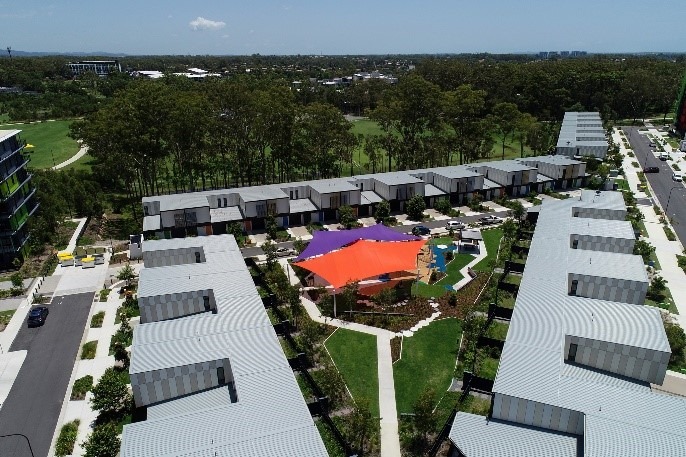YOU ARE HERE:

Unveiling the Beauty and Functionality of Shade Structures
Jamie Howard In Uncategorized, Shade Structure
In our ever-changing world, one thing remains constant: the sun. While its warmth and radiance are essential for life on Earth, excessive exposure to the sun’s rays can be detrimental to our health and comfort. That’s where shade structures come into play, providing respite and protection from the sun’s intense rays. In this article, we will delve into the world of shade structures, exploring what they are, their uses, how they are measured, and the innovation of solar max shade structures.
What Is a Shade Structure Called?
A shade structure is a versatile and invaluable architectural feature designed to provide shelter from the sun’s harsh UV rays and heat. These structures are available in a variety of shapes, sizes, and materials, allowing for customization to suit specific needs and preferences. Depending on their design and function, shade structures may be referred to by different names. Some of the common names include:
- Shade Sail: Shade sails are large pieces of fabric or other materials suspended between anchor points to create a shaded area. They often take on unique shapes, resembling sails, and are a popular choice for providing shade in outdoor spaces like playgrounds, patios, and swimming pools.
- Pergola: Pergolas are open-air structures featuring horizontal beams and lattice-style roofs. While they are often used for growing climbing plants, they can also be equipped with shade canopies or retractable covers to provide shade in outdoor spaces.
- Gazebo: Gazebos are freestanding or attached structures with a roof and open sides. They are used as outdoor relaxation spaces and can be fitted with curtains or drapes to offer shade and privacy.
- Canopy: Canopies are versatile shade structures that come in various forms, such as pop-up tents or permanent installations. They are commonly used at events, markets, and outdoor gatherings to offer quick and portable shade.
- Shade Pavilion: Shade pavilions are larger, more permanent structures used in parks, recreational areas, and public spaces to provide substantial shade coverage for numerous people.
- Umbrella: While not a structure in the traditional sense, umbrellas are portable, collapsible shade devices that can be easily moved and adjusted to provide shade where needed. They are commonly used on patios, at the beach, and in outdoor dining areas.
What Is the Use of Shade Structures?
Shade structures serve a multitude of purposes, making them indispensable in various settings. Here are some of the primary uses of shade structures:
- Sun Protection: The most fundamental purpose of shade structures is to protect individuals from the harmful effects of prolonged sun exposure. They shield people from the sun’s ultraviolet (UV) radiation, reducing the risk of sunburn, heatstroke, and long-term skin damage.
- Outdoor Comfort: Shade structures enhance the comfort of outdoor spaces, allowing people to enjoy the fresh air and natural surroundings without discomfort from excessive heat. This makes them perfect for outdoor dining areas, patios, and poolside
- Playground Safety: Shade structures are often installed in children’s playgrounds to create shaded areas where kids can play safely. Protecting children from sunburn and overheating is a top priority in these settings.
- Energy Efficiency: Shade structures can help reduce the indoor temperature of adjacent buildings, making them more energy-efficient. By blocking direct sunlight, they decrease the need for air conditioning and save on cooling costs.
- Aesthetic Enhancement: Shade structures can also serve as design elements, enhancing the visual appeal of outdoor spaces. They come in various styles and materials, enabling them to complement the overall aesthetic of the area.
How Do You Measure a Shade Structure?
Measuring the effectiveness of a shade structure is essential to ensure that it provides the desired level of protection and comfort. The measurement of a shade structure revolves around two key aspects: the amount of shade it provides and its UV protection capabilities.
- Shade Factor: The shade factor or shade coefficient is a measure of the amount of shade provided by the structure. It is usually expressed as a percentage, where 100% represents complete shade, and 0% represents no shade. Measuring the shade factor involves determining the area under the shade structure and calculating the percentage of that area shaded at any given time.
- Ultraviolet (UV) Protection: Shade structures should also be evaluated for their ability to block harmful UV radiation. This measurement is expressed as a UPF (Ultraviolet Protection Factor) rating, similar to the way UPF ratings are used for sun-protective clothing. The higher the UPF rating, the better the UV protection.
- Temperature Reduction: Another way to measure the effectiveness of a shade structure is to monitor temperature reductions in shaded areas. Instruments like infrared thermometers can be used to compare temperatures under the structure and in the surrounding uncovered areas. The greater the temperature reduction, the more effective the shade structure.
- Visual Comfort: Visual comfort refers to the reduction in glare and brightness experienced in shaded areas. It can be measured using specialized equipment that assesses the amount of light reduction and the impact on human vision and comfort.
What Is a Solar Max Shade Structure?
In recent years, there has been a growing demand for eco-friendly and energy-efficient solutions in all aspects of construction and design. Shade structures have not been exempt from this trend, and one innovative solution that has emerged is the solar max shade structure.
Solar max shade structures are a fusion of traditional shade structures and solar technology. These structures integrate photovoltaic (PV) solar panels into their design to harness the power of the sun and convert it into electricity. This dual-purpose design offers several advantages:
- Renewable Energy Generation: Solar max shade structures generate electricity by capturing sunlight, making them a sustainable energy source. This energy can be used to power lighting, appliances, or be fed back into the grid, reducing energy costs.
- Shade and Energy Efficiency: These structures continue to provide shade while generating clean energy. This dual functionality enhances their value, especially in commercial and public spaces where both shade and energy efficiency are essential.
- Environmental Benefits: Solar max shade structures contribute to a reduction in greenhouse gas emissions by producing clean energy. They are an eco-friendly addition to any space, aligning with efforts to combat climate change.
- Aesthetic Appeal: Solar max shade structures can be designed to seamlessly integrate solar panels into their structure, maintaining their aesthetic appeal while serving a dual purpose.
Conclusion
Shade structures, in their many forms and names, play a vital role in enhancing our outdoor experiences, ensuring our safety and comfort under the sun. Whether in residential settings, public spaces, or commercial applications, shade structures offer a refuge from the sun’s harsh rays. Through innovative designs like solar max shade structures, they now also contribute to sustainable energy generation, aligning with the growing global focus on eco-friendly solutions. These versatile and functional structures continue to evolve, meeting the ever-changing demands of our modern world.
Share:
Jamie Howard - Director
Co-founder and Director Jamie has been hands-on in the shade and steel industry since leaving school. With over 15 years’ experience in shade, membrane and steel projects, Jamie is excited about the design opportunities shade structures offer in the commercial and industrial sectors. Jamie’s extensive design skills give him a competitive edge in situations with technical design complexity. He has won two personal industry awards for his designs, alongside many company-won awards.

